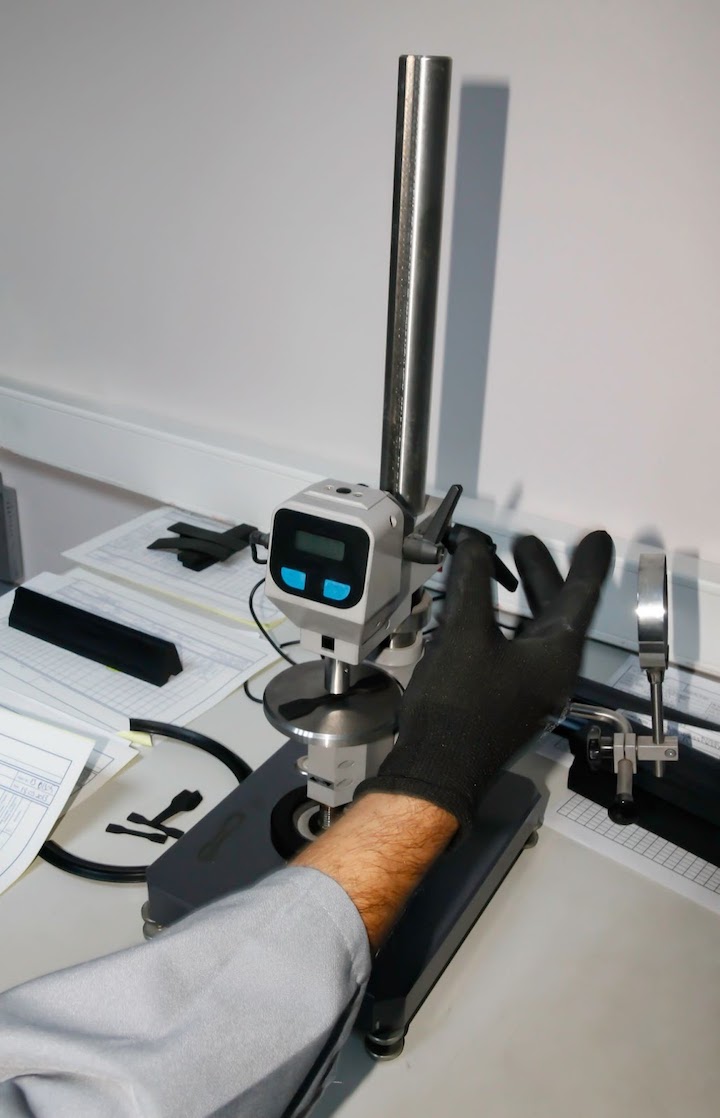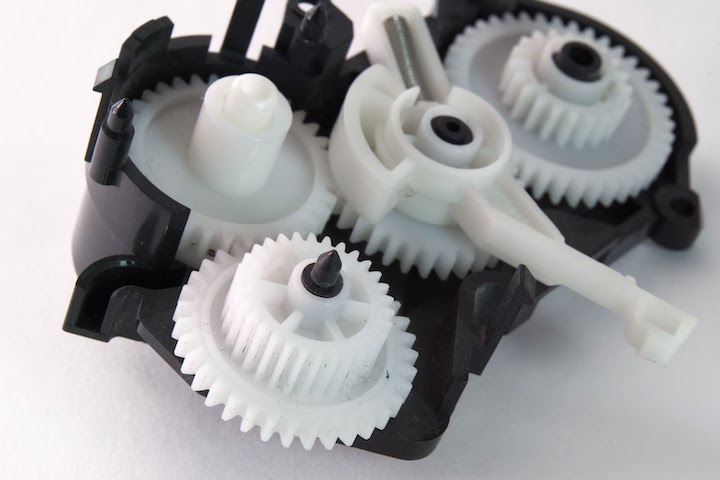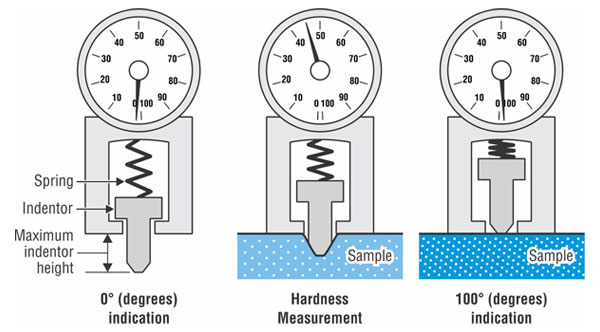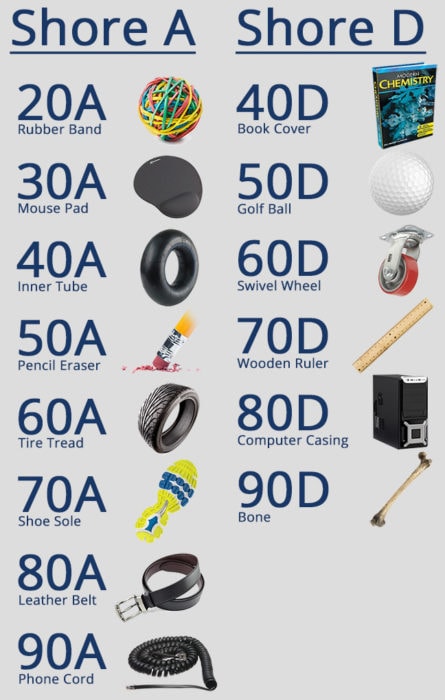Time to read: 4 min
Material selection is one of the most important aspects of any engineering design. Depending upon your project requirements, you may need to balance the hardness or softness of a part in order to use a specific manufacturing method or tooling, or to meet end-use requirements for cushioning or impact resistance.
When working with rubbers or plastics, the typical hardness measurement methods and scales for metals (such as Rockwell and Vickers) cannot be used. Instead, we have what is known as durometer, which measures and evaluates softer materials like the plastics and rubbers used in medical tubing.

What is Durometer?
Durometer can refer to two things: the hardness of a material, or the tool that is used to take this measurement. This article covers both, but durometer as a measure of the hardness or softness of a material is probably the more important consideration for part designers. (Material scientists are likely more interested in durometer as a measurement tool.)

Although a durometer can measure the hardness of many substances, these tools are used typically with rubber or plastic products. O-rings are an example of a rubber part where designers need to specify the durometer. Depending upon the sealing properties required, you’ll need to balance the material’s hardness or softness against other properties, such as an O-ring’s ability to withstand high temperatures or contact with petroleum products.
For plastics, durometer is critical for both injection molding and additive manufacturing. It’s also a consideration with parts that are CNC machined. That’s because durometer affects not only the final performance of a part such as a plastic gear, but also processing considerations such machine tools and deburring methods.

How Does a Durometer Tool Work?
As mentioned above, in order to test durometer, a tool called a durometer is used. This test generally consists of an indenter pressed into the surface of a material with a precise amount of force, then the depth of the indentation is measured and the device calculates a value. This is just a simple explanation, of course, and there are multiple factors in the testing specification — ASTM D2240 is the standard test method for durometer.
The image below shows how a durometer works.

Image Credit: Hoto Instruments
The value provided in a durometer measurement is not a unit of measurement like inches or pounds. Rather, durometer numbers are a dimensionless measurement compared to other materials that undergo similar testing parameters.
In order to capture the range of different hardnesses from various materials, 12 Shore hardness scales were created. The two most common scales are Shore A, which measures flexible rubbers to some semi-rigid plastics; and Shore D, which measures hard rubbers, semi-rigid plastics, and hard plastics.
Below you can see the hardness on the Shore A and Shore D scales of some common products, many of which are made of rubber or plastic.

Image Credit: Hapco Inc.
As a part designer evaluating your options, you’ll see material specifications with a specific durometer value for a material. Of course, material specs are only one element you need to consider when designing a part for injection molding — which is why we created an injection molding design guide that you can download and keep for reference.
Download the Injection Molding Design Guide
Durometer and Material Selection
Harder plastics and even some Shore D plastics can be machined or injection molded, depending on the quantity of parts required. Machining isn’t an option for Shore A materials or softer Shore D materials because of their material deflection. Instead, a casting or molding process is required, and these types of polymers can be cast in RTV materials to simulate the final production material. Alternatively, a prototype injection mold or a compression mold tool can be constructed to produce parts.
Below are some common categories for rubbers and plastics, and their typical durometers.
Soft Rubbers
- Parts like seals and gaskets often have a typical durometer reading of 30A-40A
- Softer elastomers provide increased cushioning and ductility to support greater sealing
Medium Rubbers
- Medium hardness rubbers typically have durometers that range from 50A-70A
- A medium-durometer rubber can offer a good balance of properties
Hard Rubbers
- Parts like tires and rollers have higher durometer readings of 70A-90A
- Generally, harder rubbers are used in applications that require greater resistance to wear, impact, and abrasion
Soft Plastics
- Soft plastics usually have durometer readings between 20A-50D
- Similar to soft rubbers, these materials allow for better cushioning and provide flexibility for complex shapes in injection molding
Hard Plastics
- Harder plastics like polycarbonate and acrylic have durometer readings of 80D-90D
- Similar to hard rubbers, their increased hardness allows for better impact and abrasion resistance at the expense of increased brittleness
Complex Parts at Ridiculous Speeds – Start Your Next Project With Fictiv
Understanding durometer and the material selection tradeoffs that you may have to make are critical for the success of your project, so it’s always good to talk to manufacturing experts, like ours here at Fictiv.
To get started working with us, create a free account and request a quote today. You’ll get the design for manufacturing (DFM) feedback you need, and Fictiv can answer your questions about durometer and other material properties that affect the success of your project.
No matter how complex your design or the materials you need, we can guide you through the production process to ensure you get good outcomes, fast — Fictiv makes complex parts at ridiculous speeds!








